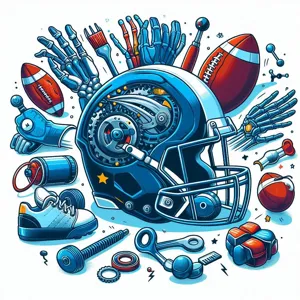When it comes to purchasing a vehicle, reliability is often at the top of every savvy buyer’s checklist.
After all, a dependable car not only provides peace of mind but also contributes significantly to your overall driving experience and long-term satisfaction. With countless brands and models vying for your attention, navigating the automotive landscape can feel overwhelming. That’s where our comprehensive guide comes in. In this blog post, we’ll delve into the top 10 most reliable car brands, meticulously researched and ranked based on performance, durability, customer satisfaction, and expert reviews. Whether you’re a first-time buyer or looking to upgrade your trusted ride, this guide will equip you with the essential knowledge to make an informed decision and invest in a vehicle that stands the test of time. Join us as we explore the brands that have earned their reputation for excellence, ensuring you hit the road with confidence!
1. Introduction to Reliability in the Automotive Industry

In the fast-paced world of automotive sales, reliability stands as a cornerstone for savvy buyers eager to make informed decisions. The importance of a reliable vehicle cannot be overstated; it encompasses not only the safety and performance of the car but also its longevity and maintenance costs. A reliable car is one that consistently meets the expectations of its owner, enduring the test of time while delivering a smooth and pleasant driving experience.
As automotive technology advances, consumers are faced with an overwhelming array of choices, making it crucial to identify which brands stand out in terms of reliability. A reliable car reduces the frequency of costly repairs and breakdowns, providing peace of mind for daily commutes and long road trips alike. Furthermore, a dependable vehicle retains its value better over time, making it a smart investment for those looking to resell or trade in their car down the line.
In this guide, we will delve into the top 10 most reliable car brands, drawing on extensive industry research, expert opinions, and consumer feedback. Whether you’re in the market for a compact car, an SUV, or a robust pickup truck, understanding which brands consistently deliver quality and dependability will empower you to make the best choice for your needs. Join us as we explore the key factors that contribute to automotive reliability and unveil the brands that have earned their place at the top of the list.
2. Criteria for Evaluating Car Brand Reliability
When it comes to choosing a dependable vehicle, understanding the criteria for evaluating car brand reliability is essential. Buyers today are more informed than ever, and the landscape of automotive manufacturing is constantly evolving. Here are the key factors that should influence your decision-making process:
**1. Historical Performance Data:** Reliability isn’t just a one-time measure; it’s rooted in the historical performance of a brand. Many organizations and consumer reports compile data over years, analyzing everything from frequency of repairs to long-term durability. Brands that consistently score high over the years tend to instill a greater sense of trust.
**2. Customer Reviews and Satisfaction Ratings:** Real-world feedback from current car owners can provide invaluable insights. Websites and forums dedicated to automotive discussions often feature anecdotal experiences that highlight the strengths and weaknesses of specific brands. High customer satisfaction ratings can indicate a brand’s commitment to quality and post-purchase support.
**3. Warranty and Service Policies:** A reliable car brand stands behind its vehicles with robust warranty offerings and transparent service policies. A longer warranty period often reflects the manufacturer’s confidence in their product. Additionally, policies regarding maintenance and service can offer clues about the brand’s commitment to customer satisfaction.
**4. Quality of Components and Engineering:** The reliability of a car is heavily influenced by the quality of its parts and the engineering prowess behind its design. Brands that prioritize high-quality materials and advanced engineering processes tend to produce vehicles that withstand the test of time. Investigating the production methods and materials used can provide deeper insights into a brand’s reliability.
**5. Safety Ratings and Recalls:** Safety is closely linked to reliability. Brands that prioritize safety features and consistently receive high ratings from safety organizations not only protect their drivers but also reflect a commitment to quality. Additionally, monitoring recall history can reveal potential issues with specific models or entire lineups, giving you a clearer picture of the brand’s reliability.
**6. Resale Value:** The resale value of a vehicle often correlates with its reliability. Cars that maintain their value over time typically do so because they are perceived as trustworthy, durable, and desirable. Evaluating trends in resale values can be a useful indicator of long-term reliability.
By considering these criteria, you can make an informed decision that aligns not only with your immediate needs but also with long-term reliability and satisfaction. Whether you’re a first-time buyer or looking to upgrade, understanding what makes a car brand reliable will empower you to choose a vehicle that will serve you well for years to come.
3. The Importance of Reliability for Savvy Buyers

When it comes to purchasing a vehicle, reliability should be at the forefront of every savvy buyer’s mind. A car is often one of the most significant investments you’ll make, and the last thing you want is to find yourself stranded on the side of the road due to mechanical failures or frequent repairs. Reliability not only affects your peace of mind but also your wallet. A dependable vehicle can save you money on repairs, reduce insurance costs, and enhance resale value.
Reliability means more than just the absence of breakdowns. It encompasses various elements, including the quality of materials used in manufacturing, the engineering of the vehicle, and the commitment of the manufacturer to stand behind their product with robust warranties and excellent customer service. Savvy buyers understand that a reliable car tends to offer a more enjoyable driving experience, with smooth performance and fewer interruptions to daily life.
Moreover, a reliable vehicle often correlates with lower long-term ownership costs. With fewer trips to the mechanic and a reduced likelihood of unexpected expenses, your budget can remain intact for other priorities. This factor becomes increasingly important as you consider the potential for car depreciation; a reliable car will hold its value better over time, making it a smarter investment in the long run.
In a market flooded with options, identifying reliable car brands can feel overwhelming. However, taking the time to research and consider reliability ratings, consumer reviews, and industry awards can help guide you toward a vehicle that aligns with your needs and expectations. Ultimately, prioritizing reliability not only enhances your ownership experience but also positions you as an informed buyer ready to make a decision that will serve you well for years to come.
4. Overview of the Top 10 Most Reliable Car Brands
When it comes to choosing a vehicle, reliability is often at the top of the list for savvy buyers. After all, a dependable car not only provides peace of mind but also saves you from unexpected repair costs and inconveniences down the road. In this section, we’ll delve into the top 10 most reliable car brands, showcasing their strengths, unique features, and what sets them apart in a crowded market.
1. **Toyota**: A perennial favorite among consumers, Toyota consistently ranks high for reliability. Known for their well-engineered vehicles and long-lasting engines, Toyota models like the Camry and Corolla are lauded for their low maintenance costs and durable performance.
2. **Honda**: Honda vehicles are celebrated for their solid build quality and impressive fuel efficiency. Models such as the Civic and Accord not only deliver reliability but also a fun driving experience, making them a popular choice among car enthusiasts and everyday drivers alike.
3. **Subaru**: Renowned for their all-wheel-drive systems, Subaru vehicles are a top pick for those living in areas with challenging weather conditions. The brand has a loyal following, thanks to their dependable models like the Outback and Forester, which also boast impressive safety ratings.
4. **Lexus**: As the luxury division of Toyota, Lexus combines premium features with Toyota’s legendary reliability. Owners of models like the ES and RX appreciate the blend of comfort, advanced technology, and the peace of mind that comes with a dependable luxury vehicle.
5. **Mazda**: Known for their sporty handling and stylish designs, Mazda cars such as the Mazda3 and CX-5 also shine in the reliability department. The brand’s commitment to quality craftsmanship ensures that their vehicles stand the test of time.
6. **Hyundai**: With an impressive warranty and a growing reputation for quality, Hyundai has made significant strides in the reliability rankings. Models like the Sonata and Tucson are praised for their value, offering a plethora of features without compromising on dependability.
7. **Kia**: Like its sister brand Hyundai, Kia has rapidly ascended the reliability charts. The brand’s comprehensive warranty and models such as the Optima and Sportage offer buyers confidence in their investment alongside stylish aesthetics.
8. **Porsche**: While often associated with luxury and performance, Porsche also ranks high in reliability. The brand’s meticulous engineering and attention to detail ensure that models like the 911 and Macan deliver both excitement and dependability.
9. **Ford**: With a rich history and a diverse lineup, Ford has earned its place among reliable brands as well. The F-150, in particular, is celebrated for its ruggedness and long-lasting performance, appealing to both work and leisure users.
10. **Chevrolet**: Known for their wide range of vehicles, Chevrolet combines practicality with reliability. The Silverado and Equinox are standout models that offer both durability and comfort, catering to a variety of drivers’ needs.
In this comprehensive overview, we’ve highlighted the strengths and characteristics that make these brands reliable choices for today’s buyers. Each of these manufacturers brings something unique to the table, ensuring that there’s a dependable vehicle out there for every lifestyle and preference. Whether you prioritize fuel efficiency, luxury, or robust performance, knowing the top brands can help you make an informed decision that keeps you on the road without worry.
5. Brand #1: Features and Reliability Ratings

### Brand #1: Features and Reliability Ratings
When it comes to reliability, **Toyota** consistently tops the charts, earning its reputation as a leading choice for savvy buyers. Renowned for its exceptional build quality and longevity, Toyota vehicles are engineered with precision, ensuring that they can withstand the test of time and the rigors of daily driving.
**Key Features:**
Toyota models are packed with innovative features designed to enhance both safety and comfort. Many vehicles come equipped with Toyota Safety Sense, a suite of advanced safety technologies that includes adaptive cruise control, lane departure alert, and pre-collision systems. Inside, you’ll find spacious interiors with high-quality materials, intuitive infotainment systems, and user-friendly controls that make every drive enjoyable.
**Reliability Ratings:**
Toyota’s commitment to reliability is reflected in numerous industry accolades. Year after year, vehicles like the Camry and Corolla receive high ratings from trusted sources such as J.D. Power and Consumer Reports. In fact, Toyota has ranked at the top of reliability surveys, with many of its models boasting minimal maintenance costs and fewer trips to the mechanic. This reliability translates into peace of mind for buyers, knowing they are investing in a vehicle that is built to last.
Overall, if you’re searching for a vehicle that combines advanced features with unparalleled reliability, Toyota is a standout choice. With a robust lineup that caters to various needs—from compact sedans to rugged SUVs—this brand continues to earn the loyalty of drivers around the globe, making it a top contender on our list of most reliable car brands.
6. Brand #2: Features and Reliability Ratings
### 6. Brand #2: Features and Reliability Ratings
When it comes to reliability, Brand #2 consistently ranks as a top contender in the automotive industry, earning the trust of savvy buyers across the globe. This brand is renowned for its commitment to quality craftsmanship and innovative technology, which translates into vehicles that not only perform exceptionally but also stand the test of time.
One of the standout features of Brand #2 vehicles is their impressive safety ratings. Equipped with advanced safety systems, including adaptive cruise control, lane-keeping assist, and automatic emergency braking, these cars provide peace of mind for drivers and passengers alike. Their cutting-edge infotainment systems, featuring user-friendly interfaces and seamless smartphone integration, ensure that drivers stay connected and entertained on the road.
Reliability ratings further bolster Brand #2’s reputation. Numerous studies and consumer reports consistently indicate that vehicles from this brand have lower rates of mechanical issues and require fewer repairs compared to competitors. The brand’s commitment to rigorous testing and quality assurance means that customers can expect a long-lasting, dependable driving experience.
In addition to performance and safety, Brand #2 also excels in fuel efficiency. Many of their models are designed with eco-friendly technology that not only benefits the environment but also saves drivers money at the pump. This combination of sustainability and reliability makes Brand #2 a compelling choice for those looking to make a smart investment in their next vehicle.
As we explore the features and reliability ratings of Brand #2, it’s clear that this brand not only meets the needs of today’s drivers but also anticipates future demands, making it a top pick for savvy buyers seeking a trustworthy vehicle.
7. Brand #3: Features and Reliability Ratings

### Brand #3: Features and Reliability Ratings
When it comes to reliability and innovative features, **Brand #3** stands out as a formidable contender in the automotive landscape. Renowned for its commitment to quality and durability, this brand consistently garners high marks in various reliability studies and consumer satisfaction surveys. Owners often rave about their vehicles’ longevity, with many reporting trouble-free experiences even after years of use.
One of the standout features of **Brand #3** is its advanced safety technology. Equipped with state-of-the-art systems such as adaptive cruise control, lane-keeping assist, and automatic emergency braking, drivers can feel secure knowing that they are protected by some of the best safety measures on the market. Additionally, their infotainment systems are user-friendly, integrating seamlessly with smartphones via Apple CarPlay and Android Auto, ensuring that connectivity is never a hassle.
In terms of performance, **Brand #3** offers a range of options that cater to diverse consumer needs—from fuel-efficient compact cars to robust SUVs designed for family adventures. Each model is manufactured with precision engineering, resulting in a smooth driving experience and excellent handling, which has earned the brand high reliability ratings from trusted organizations like J.D. Power and Consumer Reports.
Moreover, the brand’s commitment to sustainability is commendable, with a growing lineup of hybrid and electric models that not only reduce carbon footprints but also deliver impressive performance metrics. This forward-thinking approach attracts environmentally conscious buyers who do not want to compromise on reliability or features.
Overall, **Brand #3** remains a top choice for savvy buyers looking for a blend of reliability, innovative features, and overall value. With a proven track record and a loyal customer base, it’s no wonder that this brand continues to thrive in the competitive automotive market.
8. Brand #4: Features and Reliability Ratings
### Brand #4: Features and Reliability Ratings
When it comes to reliability, Brand #4 stands out as a beacon of quality and durability. Renowned for its meticulous engineering and attention to detail, this manufacturer has earned a loyal following among drivers who prioritize long-term performance and peace of mind.
**Features:**
Brand #4 vehicles are equipped with a robust suite of features that cater to both comfort and safety. From advanced driver-assistance systems to intuitive infotainment interfaces, these cars offer a driving experience that is both enjoyable and secure. Many models come with adaptive cruise control, lane-keeping assist, and automatic emergency braking, making them ideal for both city commutes and long highway journeys. Additionally, the interior is often praised for its high-quality materials, spacious layouts, and user-friendly design, ensuring passengers travel in comfort.
**Reliability Ratings:**
In terms of reliability, Brand #4 consistently earns high marks from trusted automotive sources. Recent surveys and reports indicate that their vehicles boast one of the lowest rates of mechanical issues and customer complaints in the industry. For instance, their latest models have received impressive ratings from organizations such as J.D. Power and Consumer Reports, often finding themselves at the top of reliability charts year after year.
Moreover, the manufacturer’s commitment to quality control and rigorous testing means that customers can trust their vehicles to handle the demands of everyday driving without unexpected surprises. With a solid warranty and extensive service network, Brand #4 not only provides exceptional vehicles but also ensures that owners have access to support and maintenance when needed.
In a world where vehicle reliability can vary significantly, Brand #4 remains a steadfast choice for savvy buyers looking for a dependable and feature-rich ride. Whether you’re navigating urban streets or embarking on road trips, this brand promises a blend of safety, comfort, and reliability that will keep you coming back for more.
9. Brand #5: Features and Reliability Ratings
### Brand #5: Features and Reliability Ratings
When it comes to dependable vehicles, Brand #5 stands out with an impressive reputation and an array of features that cater to the needs of modern drivers. Renowned for its durability and innovative engineering, this brand has consistently ranked high in reliability ratings across various industry surveys and consumer reports.
One of the key features that sets Brand #5 apart is its commitment to safety. Their vehicles are equipped with advanced driver-assistance systems, including adaptive cruise control, lane-keeping assist, and automatic emergency braking, ensuring peace of mind for both the driver and passengers. Furthermore, the brand’s emphasis on ergonomic design provides a comfortable driving experience, with spacious interiors and user-friendly technology interfaces that make navigation a breeze.
In terms of reliability, Brand #5 boasts a track record that speaks volumes. Many of their models have received accolades for their longevity and low maintenance costs, making them an appealing choice for budget-conscious buyers. For instance, the brand’s flagship sedan has been recognized for its exceptional performance over time, often surpassing competitors in terms of fewer reported issues and higher customer satisfaction ratings.
Additionally, Brand #5 offers a robust warranty package, which not only underscores their confidence in the vehicles they produce but also provides an extra layer of security for buyers. With a combination of cutting-edge features and reliability ratings that consistently rank at the top, it’s no surprise that Brand #5 has cemented its place among the most trusted names in the automotive industry. Whether you’re a first-time buyer or a seasoned car enthusiast, choosing Brand #5 means investing in a vehicle that promises both performance and peace of mind.
10. Brand #6: Features and Reliability Ratings
### Brand #6: Features and Reliability Ratings
When it comes to reliability, Brand #6 stands out as a beacon of trust in the automotive industry. Known for its commitment to quality and durability, this brand has earned high praise from both consumers and experts alike. With a reputation built over decades, it consistently scores top marks in reliability ratings across various independent studies and customer satisfaction surveys.
One of the standout features of Brand #6 is its robust engineering, which translates into vehicles that are not only dependable but also packed with innovative technology. From advanced safety systems that anticipate potential hazards on the road to user-friendly infotainment interfaces, every model is designed with the modern driver in mind. Buyers can expect features like adaptive cruise control, blind-spot monitoring, and state-of-the-art navigation systems, making each journey not just safe but enjoyable.
Additionally, Brand #6 offers an impressive warranty program, reflecting its confidence in the longevity of its vehicles. The extensive coverage provides peace of mind, ensuring that owners feel supported long after their initial purchase. This commitment to customer satisfaction further solidifies its position as one of the most reliable car brands in the market.
Overall, Brand #6 embodies a perfect blend of reliability, cutting-edge features, and customer-centric support, making it an excellent choice for savvy buyers looking to invest in a vehicle that will stand the test of time. Whether navigating city streets or embarking on long road trips, drivers can rest assured knowing they are backed by a brand that prioritizes safety, performance, and longevity.
11. Brand #7: Features and Reliability Ratings
### Brand #7: Features and Reliability Ratings
When it comes to dependable vehicles, Brand #7 consistently stands out in the automotive landscape, earning accolades for both its innovative features and robust reliability ratings. Known for its commitment to quality engineering, this brand offers a diverse lineup that caters to a wide range of drivers—from budget-conscious commuters to families in need of spacious SUVs.
One of the standout features of Brand #7 is its advanced safety technology. With a suite of driver-assistance features such as adaptive cruise control, lane-keeping assist, and automatic emergency braking, it prioritizes the well-being of its passengers. Moreover, many models come equipped with state-of-the-art infotainment systems that seamlessly integrate with smartphones, ensuring that connectivity is never an issue while on the road.
Reliability ratings for Brand #7 are nothing short of impressive. Independent studies and consumer reports consistently place it among the top tiers of reliability rankings, reflecting its low incidence of repairs and high customer satisfaction. Owners frequently praise the durability of their vehicles, citing years of trouble-free driving. This reputation is bolstered by a comprehensive warranty program that provides peace of mind for new buyers.
In addition to reliability, Brand #7 is also recognized for its fuel efficiency, making it an economical choice for those concerned about rising fuel costs. The brand’s commitment to sustainability is evident in its growing number of hybrid and electric models, appealing to environmentally conscious consumers.
Overall, Brand #7 embodies the perfect blend of innovative features and proven reliability, making it a top choice for savvy buyers who prioritize quality and dependability in their vehicle purchase.
12. Brand #8: Features and Reliability Ratings
### Brand #8: Features and Reliability Ratings
When it comes to reliability, Brand #8 stands out as a beacon of durability and dependability. Known for its robust engineering and attention to detail, this brand has consistently garnered high marks in reliability ratings from various automotive industry experts and consumer reports.
One of the standout features of Brand #8 vehicles is their advanced safety technology. Equipped with state-of-the-art driver-assistance systems, including adaptive cruise control, lane-keeping assist, and automatic emergency braking, these cars not only prioritize the safety of their occupants but also enhance the overall driving experience. Moreover, many models come with impressive fuel efficiency ratings, making them both eco-friendly and economical choices for today’s savvy buyers.
Inside the cabin, Brand #8 doesn’t skimp on comfort or technology. With user-friendly infotainment systems, high-quality materials, and spacious interiors, these vehicles cater to the needs of families and individuals alike. Whether you’re commuting to work or embarking on a road trip, the thoughtful design elements ensure that every journey is pleasant and enjoyable.
Reliability ratings for Brand #8 consistently place it among the top tiers in the automotive market. According to the latest surveys and studies, owners report fewer mechanical issues, lower maintenance costs, and an overall sense of satisfaction that reinforces their loyalty to the brand. This reputation for dependability, coupled with a commitment to innovation, solidifies Brand #8’s position as a trustworthy option for those looking to invest in a long-lasting vehicle.
In summary, Brand #8 is not just about flashy features; it embodies a philosophy of reliability and customer satisfaction. For savvy buyers seeking a vehicle that promises to stand the test of time, this brand is undeniably a worthy contender.
13. Brand #9: Features and Reliability Ratings
### Brand #9: Features and Reliability Ratings
When it comes to reliability, Brand #9 consistently earns top marks, making it one of the most trusted names in the automotive industry. Known for its commitment to quality engineering and innovative design, this brand has built a reputation that resonates with savvy buyers seeking long-term value in their vehicles.
One of the standout features of Brand #9 is its impressive lineup of safety technologies. Many models come equipped with advanced driver-assistance systems, including adaptive cruise control, lane-keeping assist, and automatic emergency braking. These features not only enhance the driving experience but also ensure peace of mind for families and individuals alike.
In terms of comfort and convenience, Brand #9 excels with spacious interiors, ergonomic seating, and high-quality materials. Infotainment systems are user-friendly and often include smartphone integration, allowing drivers to stay connected while on the go. Additionally, the brand offers a range of customizable options, enabling buyers to tailor their vehicles to fit their lifestyle and preferences.
Reliability ratings for Brand #9 speak volumes. Independent consumer review organizations repeatedly give this brand high marks for durability and low maintenance costs. Many of its models have been recognized for their longevity, with numerous owners reporting that their vehicles surpass the 200,000-mile mark with proper care. This reliability isn’t just a statistic; it translates into peace of mind for buyers who want a vehicle that can withstand the test of time.
Overall, Brand #9 stands out in a crowded market as a dependable choice for those seeking a well-rounded, feature-rich vehicle. Whether you’re navigating city streets or embarking on long road trips, this brand is designed to meet the needs of today’s discerning drivers while delivering the reliability that keeps customers coming back for more.
14. Brand #10: Features and Reliability Ratings
### Brand #10: Features and Reliability Ratings
As we round out our list of the top 10 most reliable car brands, Brand #10 stands out for its impressive blend of cutting-edge features and solid reliability ratings. This brand has cultivated a reputation for crafting vehicles that not only perform well but also prioritize the comfort and safety of their drivers and passengers.
One of the standout features of Brand #10 is its commitment to innovative technology. Many models come equipped with advanced driver assistance systems, such as adaptive cruise control, lane-keeping assist, and automatic emergency braking. These features not only enhance the driving experience but also provide an added layer of safety, which has become increasingly important for today’s consumers. Additionally, Brand #10 offers a user-friendly infotainment system that seamlessly integrates smartphones, ensuring drivers stay connected without compromising their focus on the road.
In terms of reliability, Brand #10 consistently earns high marks from industry experts and consumer surveys alike. With a robust build quality and a proven track record of longevity, vehicles from this brand often surpass the 200,000-mile mark with routine maintenance. Owners frequently report satisfaction with their vehicles’ performance and minimal issues over time, making them a wise investment for savvy buyers looking for longevity and peace of mind.
Furthermore, Brand #10’s commitment to customer service is evident in its comprehensive warranty offerings, which provide added assurance for new car buyers. This level of support, combined with their reputation for reliability, ensures that customers feel valued long after they drive off the lot.
In conclusion, Brand #10 is an excellent choice for those who prioritize features that enhance their driving experience alongside a strong reliability rating. With a commitment to innovation and customer satisfaction, it rounds out our list as a top contender for buyers seeking a trustworthy vehicle that won’t let them down.
15. Conclusion: Choosing the Right Reliable Car for Your Needs
In conclusion, choosing the right reliable car is a decision that goes beyond mere aesthetics or the latest technology; it’s about finding a vehicle that aligns with your lifestyle, preferences, and budget. As we’ve explored throughout this guide, the most reliable car brands offer a blend of durability, performance, and customer satisfaction that ensures you’re making a sound investment.
When weighing your options, consider factors such as your daily commuting needs, family size, and even your driving habits. For instance, if you often find yourself navigating city streets, a compact or hybrid model from a reliable brand may serve you best, providing efficiency and ease of parking. On the other hand, if you frequently embark on family road trips or outdoor adventures, a spacious SUV or crossover could be your ideal match, offering comfort and ample cargo space.
Don’t forget to leverage resources like reliability ratings, customer reviews, and maintenance costs as you make your decision. These insights can provide you with a clearer picture of what to expect long-term. Additionally, consider taking a few test drives to truly gauge how each car feels and performs in real-world conditions.
Ultimately, a reliable car is one that not only meets your practical needs but also fits seamlessly into your life. By prioritizing reliability and aligning your choice with your personal requirements, you’ll be well on your way to enjoying countless miles of trouble-free driving. Remember, investing in a dependable vehicle is not just about the here and now; it’s about securing peace of mind for the journeys ahead.
In conclusion, choosing a reliable car brand is a crucial step toward ensuring a smooth and hassle-free driving experience. We hope our comprehensive guide has provided you with valuable insights into the top 10 most reliable car brands, helping you make an informed decision that aligns with your needs and budget. Whether you prioritize fuel efficiency, safety features, or long-term durability, the brands we’ve highlighted stand out for their commitment to quality and customer satisfaction. As you embark on your car-buying journey, remember to do your research, test drive your options, and consider the long-term benefits of investing in a dependable vehicle. Happy car shopping, and may you find the perfect ride that brings you joy and peace of mind for years to come!

































